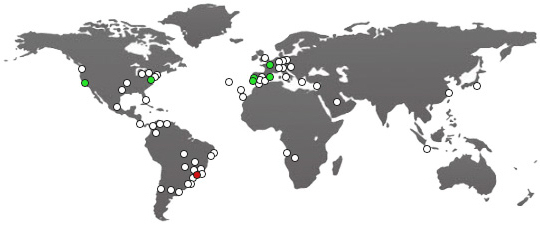Home page Care Health Treat other Diseases Herpes
Herpes - Treat with Aloe Arborescens / Vera

The medical plant Aloe Arborescens treats the disease Herpes more efficiently than Aloe Barbadensis (Aloe Vera)
Research from the Palatini Institute in Salzano, Venice, Italy, rvealed that Aloe Arborescens is 200% richer in medicinal properties than Aloe Barbadensis (Aloe Vera).
Aloe Arborescens is of all known plants the plant with the highest number of identical enzymes in our body: it fills 73 of the main 95 enzymes of the human body.
According to multiple scientific reports, Aloe Arborescens is extremely effective in the following areas: it detoxifies and cleanses blood vessels; Is effective in intestinal health, heartburn, reflux, gastritis and other diseases resulting from the malformation of the Immune System.
Herpes simplex is a viral disease caused by the herpes simplex virus. Infections are categorized based on the part of the body infected. Oral herpes involves the face or mouth. It may result in small blisters in groups often called cold sores or fever blisters or may just cause a sore throat. Genital herpes, often simply known as herpes, may have minimal symptoms or form blisters that break open and result in small ulcers. These typically heal over two to four weeks. Tingling or shooting pains may occur before the blisters appear. Herpes cycles between periods of active disease followed by periods without symptoms. The first episode is often more severe and may be associated with fever, muscle pains, swollen lymph nodes and headaches. Over time, episodes of active disease decrease in frequency and severity. Other disorders caused by herpes simplex include: herpetic whitlow when it involves the fingers, herpes of the eye, herpes infection of the brain, and neonatal herpes when it affects a newborn, among others. There are two types of herpes simplex virus, type 1 (HSV-1) and type 2 (HSV-2). HSV-1 more commonly causes oral infections while HSV-2 more commonly causes genital infections. They are transmitted by direct contact with body fluids or lesions of an infected individual. Transmission may still occur when symptoms are not present. Genital herpes is classified as a sexually transmitted infection. It may be spread to an infant during childbirth. After infection, the viruses are transported along sensory nerves to the nerve cell bodies, where they reside lifelong. Causes of recurrence may include: decreased immune function, stress, and sunlight exposure. Oral and genital herpes is usually diagnosed based on the presenting symptoms. The diagnosis may be confirmed by viral culture or detecting herpes DNA in fluid from blisters. Testing the blood for antibodies against the virus can confirm a previous infection but will be negative in new infections. Text origem Wikipedia. More information at https://en.wikipedia.org/wiki/Herpes_simplex







